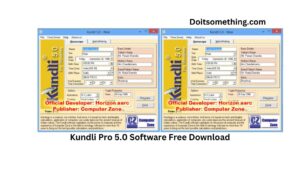What is Terraform | All the Information You Need | [2023]

Terraform
Terraform
Do you understand Terraform? If so, you have come to the proper article. Here, we’re talking about. Continue reading to learn more.
Terraform is an open-source infrastructure-as-code (IaC) tool developed by HashiCorp. It allows you to describe your infrastructure in code using a declarative language, and then use that code to provision and manage your infrastructure on a variety of cloud providers, such as Amazon Web Services (AWS), Microsoft Azure, and Google Cloud Platform (GCP).

With Terraform, you can define your infrastructure as a set of resources, such as virtual machines, load balancers, databases, and networking components, and then use to create, change, and destroy those resources as needed. provides a consistent, repeatable, and automated way to manage your infrastructure, which can help improve reliability, reduce errors, and increase productivity.
Terraform supports a wide range of cloud providers and services, and can be used to manage infrastructure across many providers and environments. It also supports a variety of resource types, including compute, storage, networking, and security resources. also integrates with other tools in the HashiCorp ecosystem, such as Vault for secrets management and Consul for service discovery and configuration.
Terraform is a popular choice for infrastructure management and automation because it is flexible, scalable, and easy to use. It has a large and active community of users and contributors, and a rich ecosystem of plugins and modules that can help you get started quickly and easily.
Read More What Is Databricks
What is Terraform
Terraform is an open-source infrastructure as code (IaC) tool developed by HashiCorp that enables you to manage your infrastructure and cloud resources through code. It allows you to define, provision, and manage your infrastructure as code, using a declarative language to describe the resources and their configurations.
With Terraform, you can create, change, and delete infrastructure resources in a consistent and automated way, regardless of the underlying cloud platform or technology. You can use Terraform to manage resources on public cloud platforms like AWS, Azure, and Google Cloud Platform, as well as private cloud environments like VMware and OpenStack.

The Terraform configuration language allows you to define the desired state of your infrastructure, and Terraform will then create or update resources to match that state. also provides features like dependency management, change preview, and resource graph visualization to make it easier to manage complex infrastructure deployments.
Using helps you avoid manual configuration of infrastructure resources, which can be time-consuming, error-prone, and difficult to reproduce. Instead, you can use code to define your infrastructure and manage it with the same tools and processes you use for your application code, improving your infrastructure’s scalability, maintainability, and reproducibility.
How does work?
Terraform works by defining infrastructure resources in code using a declarative configuration language, and then using this code to create and manage the resources. Here’s a high-level overview of how Terraform works:
- Configuration: The first step is to define the desired state of the infrastructure resources in a Terraform configuration file. This file defines the resources to be created, their settings, and any dependencies between them.
- Plan: Once the configuration file is created, Terraform analyzes it to determine the changes needed to reach the desired state. This process generates a “plan,” which outlines the resources that need to be created, updated, or deleted to achieve the desired state.
- Apply: After reviewing the plan, the next step is to apply it. Terraform executes the plan, creating or modifying infrastructure resources as needed.
- State Management: Terraform tracks the state of the infrastructure resources it manages. This allows it to determine whether resources are in the desired state and make changes as needed. Terraform stores the state in a state file, which is updated whenever changes are made.
- Continuous management: Terraform can be used for continuous management of infrastructure resources. It can detect changes to the configuration and apply them automatically, ensuring that resources stay in the desired state over time.
Omit, Terraform works by defining infrastructure as code, analyzing the desired state, creating a plan to reach that state, applying the plan, and managing the state of the infrastructure resources over time. This approach enables organizations to manage infrastructure resources consistently, with greater efficiency, reliability, and scalability.
Why Infrastructure as Code?
Infrastructure as Code (IaC) is a practice of managing and provisioning infrastructure resources, such as servers, networks, and storage, using code and software development techniques. IaC helps organizations to treat infrastructure as a software-defined layer, which enables them to automate the entire infrastructure management process, improve reliability, reduce costs, and increase efficiency.
Here are some of the key benefits of Infrastructure as Code:
- Automation: With IaC, infrastructure resources can be easily provisioned, configured, and deployed using code, making the process automated and repeatable.
- Consistency: IaC helps to ensure that the infrastructure environment is consistent across all stages of the development lifecycle, reducing errors and minimizing the risk of misconfigurations.
- Scalability: IaC enables organizations to scale infrastructure resources up or down as needed, quickly and easily, without requiring manual intervention.

- Version Control: By managing infrastructure as code, you can easily track changes, collaborate, and roll back to a previous version if necessary.
- Testing: IaC enables automated testing and verification of infrastructure resources, allowing teams to catch potential issues earlier in the development lifecycle.
Omit, Infrastructure as Code helps organizations to manage infrastructure resources more efficiently, with greater agility and reduced risk, making it a valuable practice for any organization looking to improve their infrastructure management processes.
Core Elements & Providers
Here is a table outlining Terraform’s core elements and providers:
| Core Elements | Description |
| Resources | A representation of a single infrastructure object, such as a virtual machine, storage bucket, or DNS record. |
| Data Sources | A way to query data from a third-party service, such as a list of available AWS regions, without creating an actual resource. |
| Variables | A way to parameterize Terraform configurations, allowing users to customize the values of resources and data sources at runtime. |
| Outputs | A way to define values that are made available to the user after a Terraform configuration is applied, such as a database endpoint or IP address. |
| Modules | A reusable and shareable collection of Terraform resources and data sources that can be used across multiple Terraform configurations. |
| Providers | Description |
| AWS | Amazon Web Services provider for managing resources such as EC2 instances, S3 buckets, and RDS instances. |
| Azure | Microsoft Azure provider for managing resources such as virtual machines, storage accounts, and databases. |
| GCP | Google Cloud Platform provider for managing resources such as Compute Engine instances, storage buckets, and Bigtable clusters. |
| Kubernetes | Kubernetes provider for managing Kubernetes resources such as pods, services, and deployments. |
| GitHub | GitHub provider for managing repositories, webhooks, and actions. |
| GitLab | GitLab provider for managing repositories, runners, and groups. |
| Heroku | Heroku provider for managing Heroku apps, add-ons, and config vars. |
| MySQL | MySQL provider for managing MySQL databases, users, and grants. |
| PostgreSQL | PostgreSQL provider for managing PostgreSQL databases, roles, and extensions. |
| Cloudflare | Cloudflare provider for managing DNS records, zones, and firewall rules. |
Note that this is not an exhaustive list of Terraform’s core elements and providers, as new providers and elements are constantly being added to the Terraform ecosystem.
What is Terraform used for?
Terraform is used for managing and provisioning infrastructure resources in a consistent and automated way, using code. Some of the most common use cases for Terraform include:
- Cloud infrastructure management: Terraform can be used to provision and manage resources on cloud platforms such as AWS, Azure, and Google Cloud Platform. This includes infrastructure resources like virtual machines, storage buckets, load balancers, and databases.
- Infrastructure automation: Terraform enables the automation of infrastructure deployment, configuration, and updates, making it easier to manage complex infrastructure environments and reducing the risk of human error.

- Version control: By managing infrastructure as code, allows organizations to use version control tools like Git to track changes to infrastructure resources, collaborate on changes, and revert to previous versions if necessary.
- Infrastructure testing: Terraform enables automated testing and verification of infrastructure resources, allowing teams to catch potential issues earlier in the development lifecycle.
- Compliance and security: Terraform can help ensure compliance with security and regulatory requirements by automating the deployment of security controls and policies.
The Importance of Terraform
Terraform is an important tool for managing infrastructure as code and has several benefits for organizations:
- Automation: Terraform automates the deployment of infrastructure, making it easier to provision and manage resources at scale.
- Version Control: Terraform treats infrastructure as code, allowing for version control and collaboration, which is especially important in a DevOps environment.
- Multi-Cloud Support: Terraform supports many cloud providers, making it easier to manage hybrid and multi-cloud environments.
- Cost Reduction: Terraform helps organizations save costs by allowing them to spin up resources only when needed and shutting them down when not in use.
- Security: Terraform can automate the deployment of security controls and policies, helping to ensure compliance with security and regulatory requirements.
Omit, Terraform is an important tool for organizations that want to manage infrastructure as code, increase agility, reduce costs, and improve security and compliance. By automating infrastructure deployment, organizations can focus on delivering business value and innovation, rather than managing the underlying infrastructure.
Benefits of Terraform
Terraform offers several benefits for organizations looking to manage infrastructure as code:
- Consistency: Terraform enables organizations to define infrastructure as code, ensuring that infrastructure resources are provisioned consistently across different environments.
- Multi-Cloud Support: supports many cloud providers, allowing organizations to manage infrastructure resources across many clouds and reduce vendor lock-in.
- Agility: Terraform enables organizations to quickly spin up or tear down infrastructure resources as needed, making it easier to respond to changing business needs.

- Version Control: Terraform treats infrastructure as code, allowing for version control and collaboration, making it easier to manage infrastructure changes and updates.
- Security: can automate the deployment of security controls and policies, helping organizations to ensure compliance with security and regulatory requirements.
Omit, offers significant benefits for organizations looking to manage infrastructure as code, including increased consistency, automation, multi-cloud support, agility, version control, cost savings, and security. By using, organizations can focus on delivering business value and innovation, rather than managing the underlying infrastructure.
Also Read About Muscle & Fitness
Frequently Asked Questions :
Terraform is an infrastructure as code tool that lets you build, change, and version cloud and on-prem resources safely and efficiently.
Terraform is an open source tool created by HashiCorp and written in the Go programming language.
Terraform by HashiCorp is an open-source DevOps tool. It allows to build, manage, and define infrastructure across cloud providers. The Terraform tool, also called the Infrastructure Build tool, enables developers to create and modify infrastructure in a secure and efficient environment.
Conclusion
HashiCorp created the open-source infrastructure-as-code (IaC) tool called Terraform. You may use this to create and manage your infrastructure across many cloud service providers, including Amazon Web Services (AWS), Microsoft Azure, and Google Cloud Platform, by describing your infrastructure in code using a declarative language (GCP).
We sincerely hope that this essay has enlightened you on Terraform. Please let us know in the comments area if you have any questions.







